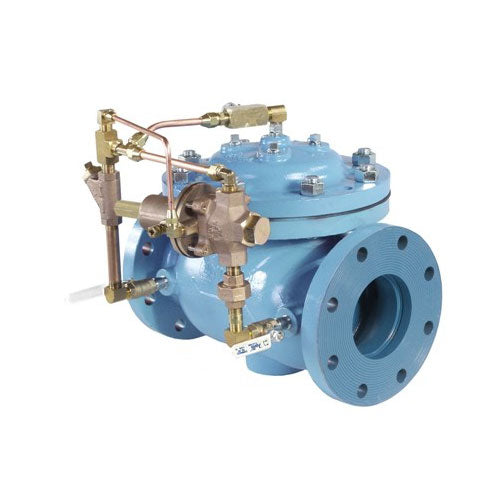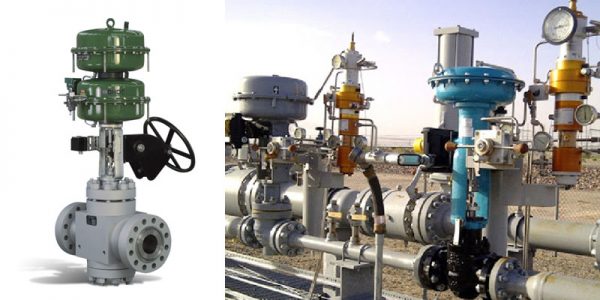Discovering the Performance of Modern Control Valves in Industrial Applications
Discovering the Performance of Modern Control Valves in Industrial Applications
Blog Article

Maximize Power Cost Savings and Comfort With Advanced Structure Automation Controls
In the world of modern-day style and facility management, the combination of advanced structure automation manages stands as a crucial advancement. The convergence of modern technology and sustainability has actually birthed a brand-new age where energy efficiency, convenience optimization, and functional streamlining are no longer obtainable realities however remote ambitions. By harnessing the power of automation, structures can adapt, respond, and advance in means that were as soon as unthinkable. The capacity for significant energy cost savings and boosted convenience is not simply an assurance however an opportunity waiting to be fulfilled. This standard shift in structure administration holds the vital to opening a world where ecological conscientiousness and owner wellness harmoniously coexist within the wall surfaces of our structures.
Energy Effectiveness Perks
Power effectiveness benefits can dramatically minimize power consumption and functional prices in buildings. By implementing energy-efficient methods and modern technologies, building proprietors and drivers can accomplish considerable savings while additionally adding to environmental sustainability. Among the primary advantages of enhancing energy efficiency in buildings is the decrease of energy costs. Energy-efficient systems, such as sophisticated structure automation controls, can enhance using resources like home heating, cooling, and lights, leading to lower energy costs with time.
In addition, enhanced energy efficiency can extend the lifespan of building devices and systems. By running a lot more efficiently, heating and cooling systems, lighting fixtures, and other structure elements experience less wear and tear, causing minimized upkeep and replacement expenses. Additionally, energy-efficient structures often command higher building values and rental rates, offering long-lasting economic advantages to proprietors.
Moreover, energy efficiency can enhance resident comfort and performance. Correctly managed indoor settings with optimal illumination and thermal conditions develop a more enjoyable and conducive office, bring about enhanced staff member satisfaction and performance. In general, the power efficiency benefits related to sophisticated structure automation controls are diverse, encompassing cost financial savings, environmental stewardship, and owner well-being.
Enhanced Convenience Control
Enhancing convenience control in structure atmospheres calls for an innovative integration of sophisticated automation systems for optimal owner well-being. By utilizing innovative building automation controls, centers can customize the interior atmosphere to fulfill the particular needs and preferences of occupants. These systems enable exact regulation of temperature, ventilation, and lighting, producing a productive and comfy atmosphere. Resident complete satisfaction and productivity are carefully linked to thermal convenience, making it vital to have systems in place that can adjust to altering conditions in real-time.
Enhanced comfort control exceeds fundamental temperature level modifications. It consists of functions such as customized setups, occupancy sensors, and natural light utilization to produce a dynamic and responsive environment. By including these advanced controls, buildings can not only enhance convenience yet likewise enhance energy effectiveness by enhancing system operations based upon real occupancy and use patterns. Eventually, prioritizing resident convenience through innovative automation systems leads to a more enjoyable and much healthier indoor environment.
Operational Efficiency Improvements

Additionally, the execution of real-time tracking and analytics tools allows building operators to identify energy inefficiencies and functional anomalies promptly. By constantly monitoring power usage patterns and system efficiency metrics, changes can be made in real-time to maximize energy consumption and make certain peak operational efficiency. control valves. Additionally, integrating demand response strategies into structure automation controls can further improve operational effectiveness by dynamically changing energy usage based on grid conditions and pricing signals
Indoor Environment Optimization
Reliable indoor climate optimization is an essential aspect of building automation controls, making sure occupants' comfort and health while maximizing power savings. By utilizing sophisticated sensing units and controls, developing automation systems can continuously keep track of and adjust temperature, moisture levels, air quality, and air flow to create an ideal interior setting. Keeping regular and comfy conditions not just boosts owner satisfaction yet also increases performance and overall health.
Indoor environment optimization likewise Read More Here plays a crucial role in energy efficiency. By fine-tuning cooling, ventilation, and heating systems based try these out on real-time information and occupancy patterns, building automation controls can significantly decrease power usage - control valves. Executing strategies such as demand-controlled ventilation and thermal zoning can aid reduce energy waste while making sure that each location of the structure obtains the necessary conditioning.

Lasting Environment Production
Structure automation regulates not just maximize indoor environment conditions for energy effectiveness and passenger comfort but also lay the foundation for developing a sustainable atmosphere via critical monitoring of sources and systems. By incorporating sophisticated building automation innovations, such as sensors, actuators, and smart software, facilities can adjust and monitor power use in real-time to lessen waste and minimize their carbon impact. These systems enable anticipating upkeep, identifying potential problems before they intensify and optimizing devices performance to boost long life and efficiency.
Furthermore, sustainable environment creation extends past energy management to include water conservation, waste decrease, and indoor air top quality improvement. Building automation controls can control water use, spot leaks, and guarantee proper waste disposal techniques, contributing to overall sustainability initiatives. Additionally, by monitoring and controlling ventilation and filtering systems, these innovations boost resident health and wellness and productivity while decreasing power usage connected with HVAC operations.
Conclusion
To conclude, advanced building automation manages offer significant benefits in terms of power savings, convenience control, functional efficiency, indoor environment optimization, and producing a lasting environment. By implementing these controls, structures can attain ideal performance while minimizing power intake and improving resident convenience. It appears that making use of sophisticated automation innovation is important in enhancing structure performance and creating a much more lasting future.
Power efficiency benefits can significantly minimize power consumption and operational costs in structures. Generally, the power effectiveness benefits associated with advanced structure automation controls are diverse, encompassing expense savings, ecological stewardship, and occupant wellness.
Additionally, incorporating demand reaction methods right into building automation controls can better improve functional effectiveness by dynamically readjusting you can look here energy use based on grid problems and pricing signals.
Structure automation controls not just optimize indoor climate conditions for power performance and owner comfort however additionally lay the structure for creating a lasting setting via critical management of systems and resources.In conclusion, progressed building automation controls deal considerable advantages in terms of power cost savings, convenience control, operational performance, interior climate optimization, and developing a sustainable atmosphere.
Report this page